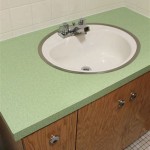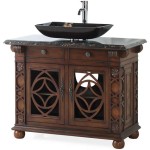Bathroom Sink Cleaning Tips: Essential Aspects for a Spotless Basin
Maintaining a sparkling clean bathroom sink is not only aesthetically pleasing but also crucial for hygiene. Neglecting to clean the sink regularly can lead to unsightly stains, soap scum buildup, and even mold growth, creating an unhygienic and unpleasant environment.
Understanding the essential aspects of bathroom sink cleaning is vital for ensuring a spotless and healthy basin. This comprehensive article explores these key aspects, providing effective tips and techniques to help you achieve a sparkling clean sink effortlessly.
1. Regular Cleaning: The Foundation of Sink Maintenance
Regular cleaning is the cornerstone of maintaining a clean bathroom sink. Aim to clean the sink at least once a week, or more frequently if it sees heavy use. By addressing dirt and grime promptly, you can prevent buildup and keep your sink looking its best.
2. Choosing the Right Cleaner: A Match for Every Stain
Selecting an appropriate cleaning solution is essential for effective sink cleaning. Commercial bathroom cleaners are widely available, but you can also use household items like baking soda or vinegar. Choose a cleaner that is suitable for your sink material, taking into account its finish and any special cleaning requirements.
3. Tackling Soap Scum: The Arch Nemesis of Sinks
Soap scum, a combination of soap residue, minerals, and body oils, is a common challenge in bathroom sinks. To combat soap scum, use a cleaner specifically formulated to dissolve it. Alternatively, a mixture of vinegar and water can also be effective in removing this stubborn residue.
4. Preventing Drain Clogs: Keeping Your Pipes Free-Flowing
Clogged drains can be a nuisance and a potential breeding ground for bacteria. To prevent clogs, avoid pouring grease, hair, or other debris down the sink. Use a drain screen to catch hair and other solids, and periodically pour a drain cleaning solution down the drain to keep it free-flowing.
5. Disinfection: Ensuring a Hygienic Sink
While cleaning removes dirt and grime, disinfection kills bacteria and other microorganisms that can accumulate in the sink. After cleaning, disinfect the sink using a bleach solution or a commercial bathroom disinfectant. This extra step ensures a sanitary sink surface.
6. Maintaining Shine: Restoring Lustrous Finishes
Over time, bathroom sinks may lose their original shine. To restore their luster, use a soft cloth and a non-abrasive cleaner specifically designed for the sink's material. Avoid using harsh chemicals or scouring pads, as these can damage the finish.
7. Special Considerations: Materials Matter
Different sink materials require specific cleaning methods. Porcelain, ceramic, and enamel sinks are generally easier to clean and can withstand most commercial cleaners. However, natural stone sinks, such as marble or granite, require more delicate care. Use a pH-neutral cleaner and avoid acidic or abrasive substances that can damage the stone's surface.

How To Properly Clean A Bathroom Sink Pkb Cabinetry

7 Cleaning Tips For Your Bathroom Simply Spotless

How To Clean A Bathroom Sink 12 Best Tips

Bathroom Cleaning Tips From Experts Metropolitan Bath Tile

10 Bathroom Cleaning Tips Your Modern Dad

Tips For A Cleaner Bathroom Growing Family

6 Tips To Deep Clean And Sanitize Your Bathroom Healthyhome

Best Ways To Clean Your Bathroom Sink Drain Yourself

How To Clean The Gunk Around Sink Drain Bathroom Cleaning

Wash Basin Maintenance And Cleaning Tips Fullsun







